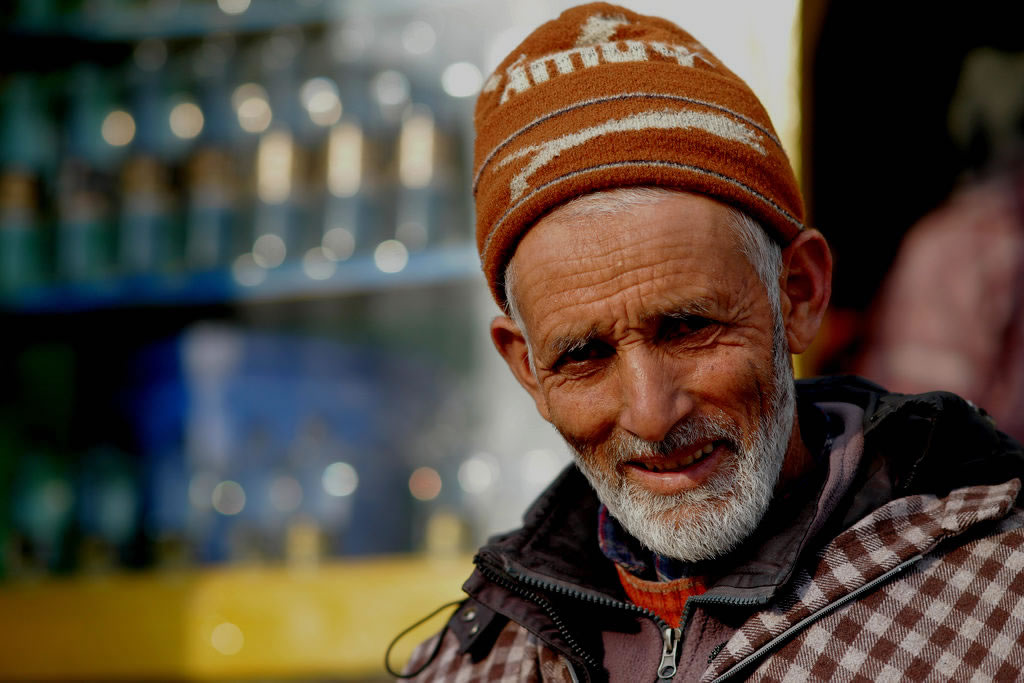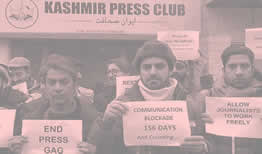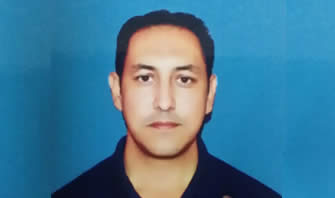Play of Hindutva in Kashmir and Disruption of Regional and Global Peace
Play of Hindutva in Kashmir and Disruption of Regional and Global Peace
Abstract
This research paper examines the role of Hindutva ideology in intensifying the Kashmir conflict and how this ideology poses a threat to regional and global security. Through a detailed analysis of Hindutva ideology and the policies of BJP and RSS, this paper explains how the policies of BJP threaten the people in Kashmir and South Asian regions. The paper argues that Modi is a cult personality, similar to Adolf Hitler and Mussolini during World War II, and explains how the policies of PM Modi bear similarities to these two.
By Abdul Rehman
Discipline: BS IR 3RD semester
Furthermore, it highlights how Modi rose to power, his commitment to RSS and
Hindutva, and his role in spreading saffron terrorism in the region by
disregarding the rules and regulations set by the UNO and the international
community to maintain peace.
Keywords: Hindutva, Nationalism, RSS,
Kashmir, South Asia, International Peace, Conflict, Regional Stability
Introduction:
The Kashmir region is one of the most disputed and militarized areas in the world. At the time of partition, Kashmir was one of the many disputed states, and its fate remained undecided. Maharaja Hari Singh was the ruler of the region at that time, and he chose to remain neutral, neither aligning with Pakistan nor India. However, as tribal forces invaded the region to impart freedom to the people of Kashmir, they were initially quite successful. When the Maharaja saw this, he found himself on the verge of defeat by the tribals, so he sought assistance from India, and Mr. Nehru was more than happy to provide it. Indian forces landed in Kashmir, and the situation changed drastically.
Initially, Indian forces struggled to fight back against the
tribals. Soon after the so-called and disputed accession documents, India
brought the matter to the UNO, arguing that Pakistan had entered the land of
Indian-controlled Kashmir. The UNO intervened with a promise to hold a
plebiscite, but both countries were required to withdraw their forces from the
region beforehand to enable this. Meanwhile, until the plebiscite, the Kashmir
region was to be governed under Article 370, granting the people autonomy to
govern themselves and live according to their own ways.
In 2019, the Modi government, which follows strict Hindutva policies,
abrogated Articles 370 and 35A. This means that Kashmir would now be treated as
one of the states of India, with New Delhi as its capital. Modi and RSS adhere
to Hindutva ideology, which is based on the Akhand Bharat concept. The purpose
of this ideology is to unify the pre-1947 areas of India into a greater India.
Savarkar, the founder of Hindutva ideology, defined Hindutva in his 1923 book
Essentials of Hindutva as an ideology where one does not necessarily need to be
Hindu religiously to be considered Hindu; rather, a common culture and ancestry
suffice. According to Savarkar, those who share common culture, ancestry, and land
are Hindus, and this identity should be prioritized over religious ideologies.
Thus, Sikhs, Jains, and Buddhists are Hindus, but Muslims and Christians are
outsiders who invaded Hindu lands. He argued that these groups should either
abandon their previous identities to integrate into India or leave the land.
Modi’s party, BJP, and the so-called apolitical RSS follow an extreme form of Hindutva ideology. Modi’s government actions in the Kashmir region reflect this ideology. The anti-Muslim policies in Kashmir and the measures to erase Muslim identity are part of these far-reaching policies. When examining the regional impacts of Hindutva ideology, RAW's actions in Nepal to undermine its democracy and bring it closer to Indian borders, as well as conflicts with China and Pakistan over Kashmir, become apparent. India’s rejection of BRI projects stems from CPEC passing through AJK. Actions by Indian secret services in Afghanistan, Iran, and Gulf countries further illustrate how the Modi-Hindutva mindset poses a threat to regional and global peace, requiring urgent attention and cooperation from global and regional stakeholders.
This study seeks to address key questions about the disruptive impact of Hindutva ideology on peace and stability: How is Hindutva ideology disrupting regional peace in South Asia? How have Hindutva politics undermined the status and core values of Kashmir? How does Hindutva ideology contribute to global peace disruption in the 21st century? The significance of this research lies in its potential to provide solutions to regional instability and shed light on issues like human rights violations in Indian-occupied Kashmir, making it essential to understanding the Kashmir issue, Hindutva ideology, saffron terrorism, and the RSS.
The objectives of the study include understanding Hindutva ideology, examining how it disrupts regional and global peace, and exploring parallels between Narendra Modi’s policies and those of Nazi Germany and Fascist Italy, emphasizing their implications for world peace. Methodologically, the research adopts a constructivist theoretical framework in international relations and relies on qualitative analysis of secondary data, including scholarly articles and studies, to draw meaningful insights and outcomes.
1. How is Hindutva
ideology disrupting regional peace in south Asia?
Asia is one of the most divided regions in the world; unlike all other
regions, there is no solid grouping among Asian nations to come together in one
place and solve regional issues collectively. SAARC was established to create a
platform where Asian nations could unite and work for the betterment of the
Asia region, specifically the South Asian region. However, the core mission of
SAARC remained undefined and unaccomplished. The South Asian University
represents a ghostly image in New Delhi, symbolizing the shattered dreams of
SAARC nations. Unlike ASEAN, which remains one of the most successful
organizations so far, many South Asian countries have excelled economically
through ASEAN's cooperation.
BRI is one of the game-changing projects in the world. The goal of BRI
is to connect Asia with Europe, Central Asia, and Africa. The reason why India
does not accept the project is that CPEC, an outlet of this project, passes
through the Azad Kashmir region of Pakistan, and India does not recognize
Pakistan's control over that region. Thus, India is not part of the project,
even though other South Asian countries are contributing to it in one way or
another. Hindutva ideology, which is based on the Akhand Bharat ideology, does
not accept Pakistan's control over the Kashmir region.
Recent examples of Bangladesh's disruption are also linked to Modi's
ideological gains. Near the borders of Bangladesh, there are anti-Indian
maharajas who want freedom from India. Thus, Modi controlled Hasina's
government, which was pro-Hindu, leading the people of Bangladesh to disrupt
and overthrow that subservient government. Now, Bangladesh faces ongoing riots
and violence, and the country's economy is in darkness, with another authoritarian
government in place.
The ideology of the BJP is to control the region and follows the Akhand
Bharat ideology. A similar approach can be seen in Nepal, where RSS and other
secret services have been spotted interfering in the Nepalese government to
undermine democracy and bring back the reign of Prithvi Narayan Shah. This
clearly defines the Akhand Bharat ideology of Modi’s government. Nepal, a
landlocked country sandwiched between India and China, faces significant
challenges because of this position. From 1989 to 1990 and then from 2015 to
2016, India imposed blockades on Nepal's government, creating several problems
for Nepal. When Nepal became part of the BRI project, Indians were displeased,
as this undermined BJP’s Akhand Bharat ideology. Thus, Modi became anti-Nepal
to bring it back under Saffronisation.
The Modi government wants to use the Artha-Shastra ideology of Chanakya
in modern times to achieve its goals. Chanakya was a chief minister under
Chandragupta's rule; during that time, modern-day Bangladesh, Nepal, Pakistan,
parts of northern Afghanistan, southern Iran, and Sri Lanka had strong
diplomatic ties. Artha-Shastra was a well-written, practical guide on
statecraft, economics, military, spies, and everything related to governance. Western
philosophy believed in the balance of power at the time[1],
but Chanakya's ideology was to demolish everything that hindered the ruler from
establishing a greater kingdom. The goal was to conquer all neighboring states
and eliminate any equilibrium. Thus, Artha-Shastra was more of a guide to
conquest than to establishing peace in the region.
The goals of Hindutva ideology are similar, based on the “Akhand Bharat” strategy to revive the Maurya empire and eliminate the sovereignty of states to create a bigger kingdom, just like the Maurya dynasty. The Modi government is establishing high-tech military technology to increase its strength and spread fear and hegemony among neighboring countries. In May 1998, it was India that first exploded nuclear bombs, embarking on a journey to spread fear in the region. To secure its sovereignty, Pakistan followed suit to balance India’s moves.
Recently, eight Indian naval officers were caught in Abu Dhabi spying on French-made submarines, for which they were sentenced to death by the government. However, due to long-standing communal diplomatic relations and interests, Abu Dhabi forgave the death sentences. Even though the sentences were forgiven, Gulf states and the world became aware of the Modi government’s intentions to become a regional hegemon and achieve its long-term goals. Furthermore, India is using Iran to surround Pakistan and undermine the CPEC project. Kulbhushan Jadhav was arrested for spying in the Balochistan region, where he admitted to being involved in various killings and missions to undermine peace in the region and support Balochi separatist groups.
The world has seen the wrath of WWI and the personality cults of Nazism
and fascism, but little has been learned from that dark part of history.
Fascism relied on authoritarianism, militarism, ultranationalism, and social
Darwinism. The personality cult of Mussolini was the main reason people
sacrificed their basic rights in front of him. Similarly, Nazism, which sprang
from fascist ideology, led to massive killings greater than any war in
mankind's history. Both ideologies placed their nations above others, claiming
themselves to be more civilized and superior, charging people emotionally and
spreading propaganda via media and speeches.
The exact same ideology is “Hindutva”; the only difference is that it is
in Asia, not Europe. Modi places “Hindus” above all nations, and Hinduism above
Islam and Christianity, emotionally charging people with his speeches. His
propaganda machinery works round the clock to spread the message of
ultranationalism domestically and globally. Neighboring countries and the
region face this great threat from BJP and RSS propaganda and violent goals.
Social media has become one of Modi's greatest weapons to spread violence and
shape the narratives of neighboring countries’ people against their governments
and in favor of Hindutva ideology.[2]
Efforts
of Hindutva politics to demolish Kashmir's status and core values
Kashmir has historically been a Hindu
religious area, prior to the arrival of Islam in the 14th century. The region
was previously under the rule of the Mauryan dynasty, then the Shahi dynasty,
and later Babur invaded India, and Kashmir became part of the Muslim dynasty.
The region remained under the influence of the Mughal dynasty from 1586 to
1781, when the Afghans and Sikhs invaded, and the Mughal empire was too weak to
protect it. The Sikh empire took Kashmir in 1819 from the Durrani empire and
ruled until 1846. The period under Maharaja Ranjit Singh was marked by heavy
taxation and oppression for the people living there. Muslims began to flee the
state and start residing in nearby border areas in Punjab. Thus, the Muslims
across the border, under the Mughal empire and later the British empire,
welcomed Kashmiri people oppressed by the Maharaja's rule, forming a bond of
brotherhood that still exists today between Pakistan and the people of Kashmir.
After the Second Anglo-Sikh War, Sikh rule
ended in the Kashmir region, and the area was now under British control.
Maharaja Gulab was a ruler of Jammu and a prominent leader under Maharaja
Ranjit Singh's rule, so he saw an opportunity to take over the Kashmir region.
The British accepted this opportunity to bring political stability and normalcy
to the region. Maharaja Hari Singh agreed to pay 7.5 million rupees to
formalize his control over Jammu and Kashmir. The Maharaja would rule under the
shadow of the British government, which would have a say in the major decisions
of the state, such as political, strategic, and security interests of the
empire. The Maharaja would be independent but must accept a broader reign of
British rule over the subcontinent.
1947
Partition
At the time of independence, there were a
total of 562 princely states, including the Kashmir region. These states were
ruled by local Maharajas and rulers; the British did not directly rule them,
but they had various treaties regarding defense and economics. Thus, when
partition was imminent, the princely states were given the choice to join either
India or Pakistan, taking into account geographical borders and population
demographics. Most of the states decided their fate, but the fate of Kashmir,
Hyderabad, and a few others remained undecided. Maharaja Hari Singh had a
majority Muslim population, and that population was quite unhappy with the
Maharaja's rule, as shown by the 1931 incidents. They wanted to join Pakistan.
He kept aloof from both sides and decided to maintain that stance, but the
situation changed as the state was now sandwiched between two sovereign
countries, and the people wanted to align themselves with the Muslim country,
Pakistan.
As the Maharaja was in a deciding phase about
whether to join India or Pakistan, some tribal people from the Pakistan region
invaded Kashmir to give independence to their brothers in the Kashmir region.
They were quite successful in defeating the Maharaja’s forces and initially
liberated a large part of Kashmir. The Maharaja, upon seeing this, moved
towards India for help. India demanded an instrument of accession as something
in return for helping the Maharaja secure the state. Now, there is a conflict
between ideas: India claims that on October 26, they signed the instrument of
accession with the Maharaja, and on October 27, Indian forces landed after the
Maharaja’s permission. However, Pakistani scholars argue that it was not
possible to sign the instrument of accession in such a short time, and then
prepare forces in one day and deploy them by air in the Kashmir region in such
large numbers. India, therefore, landed forces illegally in the Kashmir region
and fabricated the instrument of accession, creating it hastily from the air.
UN
AND Article 370
After tribals attacked Maharaja’s forces to
liberate the Kashmiri people from Maharaja rule, the Maharaja's forces were not
able to tackle the tribals, and soon the Maharaja was looking toward Indian
forces to help him in this severe situation. Prime Minister Jawaharlal Nehru
demanded an “instrument of accession” in exchange for helping the Maharaja push
back the tribals. On October 27, 1947, Indian forces landed in Srinagar, and it
was believed that the Maharaja had signed the instrument of accession before
Indian forces landed in the region.
As the Indian government presented the instrument of accession to the world, it was the first to take the matter to the Security Council on January 1, 1948, and accused Pakistan of helping the tribesmen and using them against Indian forces. The Security Council came up with its first resolution on January 17, 1948, in which it appealed to both countries to use all their powers to bring stability to the region and report to the council regarding any material changes. It was more of an appeal rather than a resolution on its own.
On January 20, 1947, the Security Council formed
the United Nations Commission on India and Pakistan (UNCIP), assigning them to
conduct on-the-spot investigations and help both Pakistan and India bring peace
to the region to hold a plebiscite. Soon after, the Security Council passed
another resolution in April 1948 that allowed Indian forces to keep a certain
number of forces in the region and appointed its officer to peacefully conduct
the plebiscite. However, before the UNCIP arrived in India, tensions between
India and Pakistan were rising, and a full-fledged war had started. On August
13, 1948, one of the most influential resolutions was passed, calling for an
immediate ceasefire between the two countries.
Then, in 1949, the Security Council proposed
another resolution stating that it would conduct a plebiscite if both countries
followed the August 13, 1948 resolution of complete ceasefire and returned
material gains. Unfortunately, the United Nations was never able to hold that
plebiscite and remained unsuccessful, as it only made suggestions rather than
taking a strong stance like it did on August 13, 1948. Moreover, the issue of
Kashmir became part of the Cold War conflict; whenever a resolution was about
to be reached or hope emerged, the Soviet Union vetoed such cases because it
supported India, while Pakistan was a member of SEATO and CENTO at that time.
Demolishing
the Identity of Kashmiris
Hindutva politics believe in Akhand Bharat, which suggests having one single, strong India, including Nepal, Bangladesh, Pakistan, Bhutan, and all other pre-partition South Asian countries. The concept is to revive ancient Indian empires and rule over the region as one power. To make people believe in and buy this idea, the RSS used a broader term, “Bharat Mata” (Mother India). Thus, the RSS employed violent means to achieve this goal, as it was built on the basis of spreading propaganda and violence. Later on, the BJP, which is the political wing of the RSS, took charge of soft power and promoted this sense of unity among the common people, asserting that all of India is like one's mother and that protecting one’s mother is one’s sworn responsibility. Thus, they regarded Kashmir as the head of Mother India and the rest of the geography as its body.
Therefore, supporting and liberating the Kashmir region became part of every person’s duty who respects Mother India. The BJP used this technique to unite all of India to pursue its objectives. During the Gujarat riots, Narendra Modi was the Chief Minister of Gujarat state when a train full of Hindu activists was found burnt, resulting in the deaths of over 40 people, all of whom were Hindu. It was the first time the entire media of India covered the incident 24/7, and the public saw dead bodies of their countrymen live on television, raising emotions to the highest level. The media, in showing loyalty to the motherland, began to accuse Muslims for the incident, and that is how the riots started, forcing many Muslims to move out of the state and leave. Modi appeared as the savior, praising Gujarat news channels and criticizing national media for not being transparent enough against Muslims. This is how he gained the attention he needed, and the BJP launched various media campaigns to propagate its ideas.
People were tired of previous governments; Congress was the biggest opponent of
the BJP, but due to ineffective governance, corruption, and lack of support,
people did not like them, clearing the path for the BJP. Furthermore, the BJP
promised the spread of old Hindu culture, more cow protection, and addressed
the fear of the Hindu community that Muslims would one day outnumber the Hindu
population, even though the size of the Muslim community is significantly less
than that of the Hindu population in total.
In the 2014 elections, Modi appeared as “the
messiah” of the nation. His party launched a well-organized social media
campaign to manipulate the youth and make them believe that he was the only solution
to all problems, similar to Hitler in Germany and Mussolini in Italy. As he is
a firm believer in the “Bharat Mata” concept, his campaign made sure to
inculcate this idea and construct people's perceptions accordingly to achieve
his Akhand Bharat mission. After coming to power, he used social media,
electronic and print media, and the Bollywood industry to construct people's
perception and spread ultranationalism.
After manipulating and changing people's
ideologies, he abrogated Article 370 in 2019. Along with it, 35A was also
abrogated, leaving Kashmir in the hands of New Delhi Hindutva politicians and
eliminating the special status of Kashmir. Along with this, the freedom of
people, basic rights, and core values were also demolished. More than seven
lakh Indian Army personnel raided the region, the internet was shut down for
months, curfews were imposed, and people would disappear, be tortured, and then
killed.
Now, after the abrogation of Article 370 and
35A, Kashmir would be treated as another state of India, which means that in a
Muslim-majority state, those who do not want to live under the Indian
government will face Hindutva believers migrating, buying land, and imposing
curfews on Muslims. Due to the curfew, economic conditions have worsened because
people cannot export their fruit or import anything from the outside world.
Thus, now the Indian government says, “We will give you roti, kapra, makan”
(bread, clothing, and house), and in return, you will have to give up your
freedom. This sounds strange in the world’s largest democracy, where freedom of
speech and human rights are treated like dealerships or black money.[3]
How
can Hindutva ideology spread global peace disruption in the 21st century?
Rashtriya Swayamsevak Sangh (RSS) came into being in 1925, when a doctor named Keshav Baliram Hedgewar was inspired by fascist European political leaders and formed this organization. The mission of RSS was to create a unified Hindu community around common culture and historical factors, making it a right-wing paramilitary organization. Madhav Sadashiv Golwalkar, the RSS leader from 1940 to 1973, who remains one of the most influential leaders of the RSS after Hedgewar, believed in Hitler’s model to get rid of the Muslim community in India.
It is important to note that
Hitler’s formula at that time was to kill all of the Jews in Europe because
they were considered the sole cause of all problems. Gas chambers were built
where people were burned alive, and Hitler's government used widespread
electronic, newspaper, and monumental propaganda to dehumanize the Jewish
population. Over time, people were brainwashed enough to be ready to witness
and endure the mass killing and brutal treatment of the Jewish population.
In 1948, the Indian government banned the RSS due to the killing of Mahatma Gandhi by RSS activists. However, it soon became operational again and became increasingly violent. It was inspired by revolutionary and violent movements and promised to give its followers something worth dying for, the promise of regaining Hindu lost rule. Fast forward to 1990, the Jana Sangh transformed into the Bharatiya Janata Party (BJP). This was the major achievement of the RSS in obtaining a legitimate political party to run politics, while the RSS continued to feed ideological lessons from the sidelines. Most of the party's leadership came from the RSS or was affiliated with RSS and Hindu nationalism. In 1992, the first major outcome of RSS propaganda was seen when radicalized groups of Hindu nationalists attacked and demolished the Babri Masjid because they were made to believe that the site had been the temple of the Hindu god Ram. Those involved were initially arrested for trial but were later released without penalties.
Moving forward to the 2002 riots in Gujarat,
where many Muslims were killed and tens of thousands fled the state, becoming
refugees. Chief Minister Modi at that time was denied a U.S. visa because he
was found to be involved in those riots and spreading misinformation and
violence. Later, Modi won the elections and became a popular leader, appointing
most of his policymakers from the RSS and those who believed in Hindutva
ideology. One such example is Yogi Adityanath, who was appointed as Chief
Minister of Uttar Pradesh, the place where the ruins of the Babri Masjid lie.
Adityanath is a founder of the Hindu extremist militant group Yuva Vahini, a
major supporter of the Ghar Wapsi movement (conversion of Muslims and
Christians to Hinduism), cow protection, and opposition to Hindu-Muslim
marriage. He is a major supporter of many anti-Muslim movements and has called
for “killing 100 Muslims for every Hindu killed.” Therefore, when such
individuals are given high posts in government and policymaking, it is apparent
what the intentions of such a ruling government are.
A threat to the world
Nazi Germany's ideology was that Aryans were the superior race and that Jews betrayed them and were the cause of all their suffering. A similar ideology is evident in Modi's campaign, where he described Muslim refugee camps as “baby-producing factories.” Modi and his ideology align with that of the RSS because he first started his career in the RSS and worked his way up to politics. He speaks about common people and the middle class, who are often not educated enough, and with the internet being easily accessible to everyone, it becomes easy to manipulate them. Similar tactics were used by Hitler's party to brainwash people and spread his message across Germany and Europe.
When Hitler
invaded the Rhineland in 1936, the Anschluss in March 1938, and the Sudetenland
in October 1938, the League of Nations, the USA, and the British government
remained silent because they thought no one was coming toward them and, unless
Hitler directly attacked them, he could be ignored and pardoned. But when
Hitler began to exercise his quest for Lebensraum (living space), which stated
that German people needed more space to live and for a thriving nation it was
crucial to invade lands for future generations, Hitler went on to invade all of
Europe, including the Soviet Union.
The abrogation of Article 370 has a similar background plan, as Hindutva
politicians believe in Akhand Bharat, and engulfing Kashmir is one string of
this major, long-articulated plan to engulf all other South Asian nations. This
can lead to a disturbance of global peace, as during WWII, the League of
Nations was unsuccessful in stopping Hitler due to a lack of a strict code of
law and follow-up on the words they had drafted on paper. If the United Nations
does nothing at this moment and ignores this action of illegal occupation and
severe human rights violations, then countries will lose their trust in the
United Nations, and the outcome will be disastrous to witness.
The world must acknowledge that we are living in the 21st century, where three nuclear powers are neighbors, and among them, two are at the brink of war due to this pressing issue. The Indian National Congress used nuclear energy for energy projects during their term, but after the BJP took over, the Modi government is rethinking their second-strike policy and is likely to adopt a first-strike policy. This will create misunderstanding between the two countries, as there is always the threat of attack and mistrust from both sides. Moreover, the Modi government has been found responsible for the killing of many Khalistan freedom fighters across borders. The BJP controls and shapes the narrative of the population through media propaganda, which is very dangerous for the world, as one of the world's most populous countries is so brainwashed against Muslims and believes in violence and has a short temper. Many incidents show that they have a higher tendency toward violence and ultranationalism.
CONCLUSION
This study concludes that the rise of Hindutva ideology has exacerbated
regional and international peace. The people of Kashmir are facing the worst
situation in their history due to Hindutva ideology in power. The BJP is a firm
believer in Hindutva ideology and is closely related to the RSS, which is a
violent organization based on the Hindutva mindset. Recently, after the
abrogation of Article 370, Indian forces moved in with heavy numbers and
controlled the region by implementing violent means. People are forced
militarily to comply or face the consequences. Prime Minister Modi is one of
the hardline believers of Hindutva ideology, and he believes in “Akhand
Bharat,” according to which all of the South Asian countries will come together
to form one large state based on one religion—Hinduism. The Public Safety Act
and many other such black laws are being enforced in Indian-occupied Kashmir,
through which the Indian government suppresses the voices of innocent people
and commits severe human rights violations, with no one allowed to speak out
against it. This is quite similar to the fascist regime in Italy and the Nazi
regime of Adolf Hitler in Germany, so it is undoubtedly a threat to the world
and the South Asian region as well.
Policy
Recommendation
- International mediation
International organizations and governments
should come together to support peace in the region. They should act as
mediators between Pakistan and India to resolve the Kashmir issue and work with
the Indian government to promote peace and stop misinformation and mistrust,
fostering a peaceful society. They should monitor and stop media and social
media campaigns operating within India that spread violence for political
purposes.
- Human rights violations
There are numerous human rights violations
being committed in the Indian-occupied Kashmir region, and the voices of
innocent people are unheard and suppressed. The international community should
take a serious look at this issue to stop human rights violations and set up a
committee to closely monitor this situation until it is resolved once and for
all.
- Cooperation in South Asia
South Asia is a very divided region, and there
is no mutual cooperation among the countries here. The SCO and SAARC were
created to support regional peace, mutual trade, and cultural promotion for
better understanding among nations, but they are now ineffective and unable to
resolve any issues or eliminate mistrust among nations. Thus, new ways should
be found to come together and resolve issues and mistrust through talks and
negotiations, not through manipulation and brainwashing of people.
Bibliography
Shakoor,
Farzana. "UN and Kashmir." Pakistan
Horizon 51, no. 2 (April 1998): 53-69. Pakistan Institute of International
Affairs. Accessed online at https://www.jstor.org/stable/41394458.
Medha.
"The Revocation of Kashmir's Autonomy: High-Risk Hindutva Politics at
Play." GIGA Focus Asia, no. 5
(2019): 1-12.
Iqbal,
Summar, and Muhammad Kumail Mehdi. "Rising Hindutva’s Impact on Strategic
Stability in South Asia." CISS
Insight Journal 10, no. 2 (2023): 61-79. Accessed online at https://journal.ciss.org.pk/index.php/ciss-insight/article/view/231.
Kissinger,
Henry. World Order. New York: Penguin
Books, 2014.
Shah,
Fatima. "The Hindu Nationalist Agenda on Kashmir." Global Affairs Conference, George Mason
University, VA 22030 (March 26-28, 2020): 815-819.
Kaul,
Manua. "India’s Obsession with Kashmir: Democracy, Gender,
(Anti-)Nationalism." Feminist Review
119, no. 1 (2018): 126-143. https://doi.org/10.1057/s41305-018-0123-x.
Bal,
Hartosh Singh. "The Unstoppable Rise of Hindu Nationalism: How India’s Far
Right Is Conquering Castes—and the Country." Foreign Affairs, April 13, 2022
[1] 1. Henry Kissinger, World Order (New York: Penguin Books, 2014), The Multiplicity of Asia, 192
[2] Dr Summar Iqbal, & Muhammad Kumail Mehdi. (2023). Rising Hindutva’s Impact on Strategic Stability in South Asia. CISS Insight Journal, 10(2), P61-79. Retrieved from https://journal.ciss.org.pk/index.php/ciss-insight/article/view/231
[3]
Kaul, Manua. "India’s Obsession with
Kashmir: Democracy, Gender, (Anti-)Nationalism." Feminist Review 119, no. 1 (2018): 126-143. https://doi.org/10.1057/s41305-018-0123-x.
Shah,
Fatima. "The Hindu Nationalist Agenda on Kashmir." Global Affairs Conference, George Mason
University, VA 22030 (March 26-28, 2020): 815-819.
Medha.
"The Revocation of Kashmir's Autonomy: High-Risk Hindutva Politics at
Play." GIGA Focus Asia, no. 5
(2019): 1-12.
Shakoor,
Farzana. "UN and Kashmir." Pakistan
Horizon 51, no. 2 (April 1998): 53-69. Pakistan Institute of International
Affairs. Accessed online at https://www.jstor.org/stable/41394458.
Related Research Papers




























